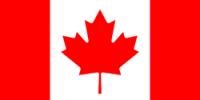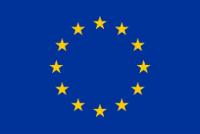Insects like bees are crucial pollinators responsible for maintaining biodiversity and food security and have long been a challenge for both existing large-scale tracking methods and high-resolution imaging systems. Large-scale tracking, such as radar, provides large-scale data but lacks the detailed resolution required for studying intricate insect behaviors. On the other hand, high-resolution imaging is often restricted to small, controlled environments, limiting their relevance to real-world conditions.
The solution came from the HFSP research work of Tat Thang Vo-Doan. The HFSP Fellowship Awardee developed the FLO Tracking system that bridges this gap by offering the ability to track insects in their natural habitats while maintaining high precision and real-time feedback. This opens new possibilities, providing significant insights into the biomechanics and neuroethological mechanisms that govern insect behavior in the wild.

One of the key features of FLO is its low-latency feedback mechanism, which adjusts motor actions based on real-time image processing within milliseconds. This helps the system maintain high precision while tracking insects, capturing accurate and detailed flight trajectories. Additionally, FLO tracking eliminates motion blur that often occurs with stationary cameras, ensuring clear and sharp images, making it perfect for capturing the fast and complex movements of flying insects.
Tat Thang Vo-Doan develops his work at the University of Freiburg, Germany, with the supervision of Andrew D. Straw. The research team highlights other key features of FLO Tracking: its high adaptability and ease of integration into various systems. Adding a high-speed camera into FLO's light path allows researchers to capture intricate details of insect flight, such as wing movement and navigation (Fig.1). By simultaneously tracking and recording high-resolution video, the system enables a thorough study of insect locomotion.
This capability is especially useful for analyzing how insects interact with their environment and respond to external factors like predators, weather, or obstacles. When mounted on a quadcopter drone, the FLO system can track bees and other insects over much extended distances (Fig. 2), which was previously limited to laboratory environments. This feature provides a breakthrough in ecological research, allowing researchers to study insect behavior over kilometers’ range in real-world ecosystems, shedding light on how environmental cues and interactions with other species influence their behaviors.


Figure 2. (A) A drone equipped with bee tracking followed a bee over a large distance as it foraged over minutes. Top left: map view of bee (white) and drone (yellow). Top center: pilot's view including on-screen display showing bee location (arrow). Bottom: Fast Lock-On Tracking camera view. (B) The bee-following drone. Credit: Straw Lab, University of Freiburg.
While FLO currently needs retroreflective markers on the insect for tracking, the marker’s lightweight is considered minimally invasive and does not significantly impact the insects' flight dynamics. For example, the markers weigh only 20 mg for bees and 70 mg for locusts, allowing them to behave naturally during tracking, ensuring the natural behavior of the insects.
Although the HFSP Fellow demonstrated FLO systems with bees and locusts, it can be applied to a wide range of insect species. Its versatility and potential to track insects over large distances in diverse environments make it a valuable tool for addressing critical ecological issues, such as habitat loss and the effects of climate change. Additionally, FLO’s potential for applications in robotics and navigation systems highlights its broader impact beyond biology, opening new avenues for biological research and robotic innovation.


































